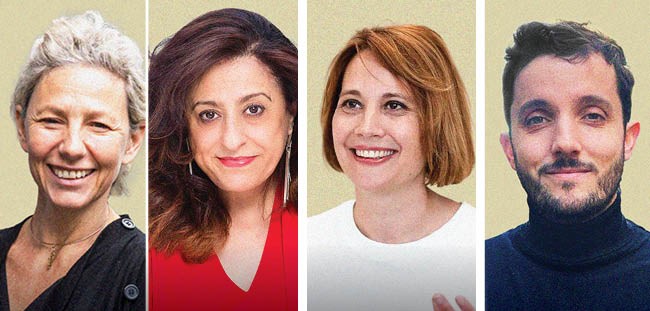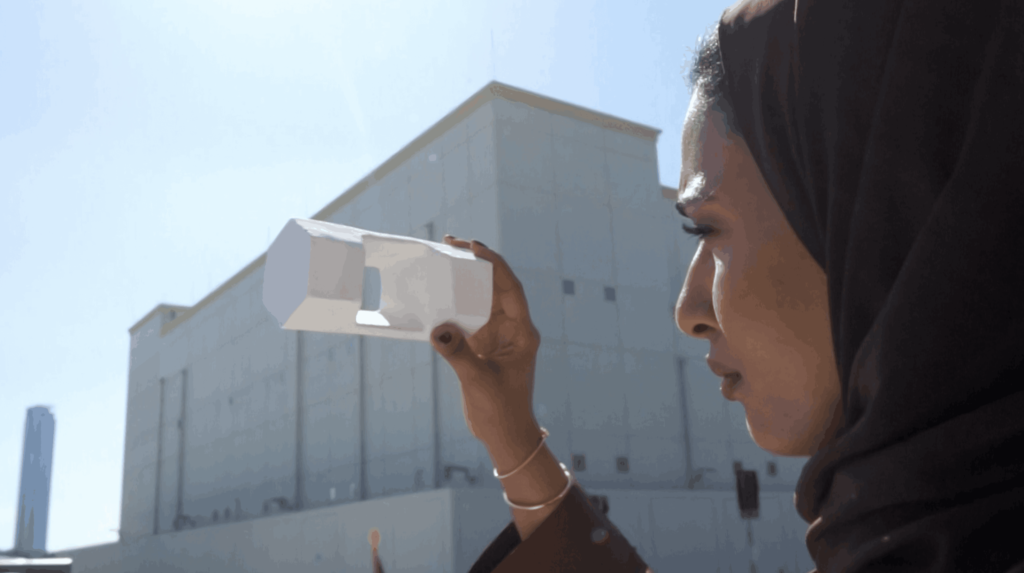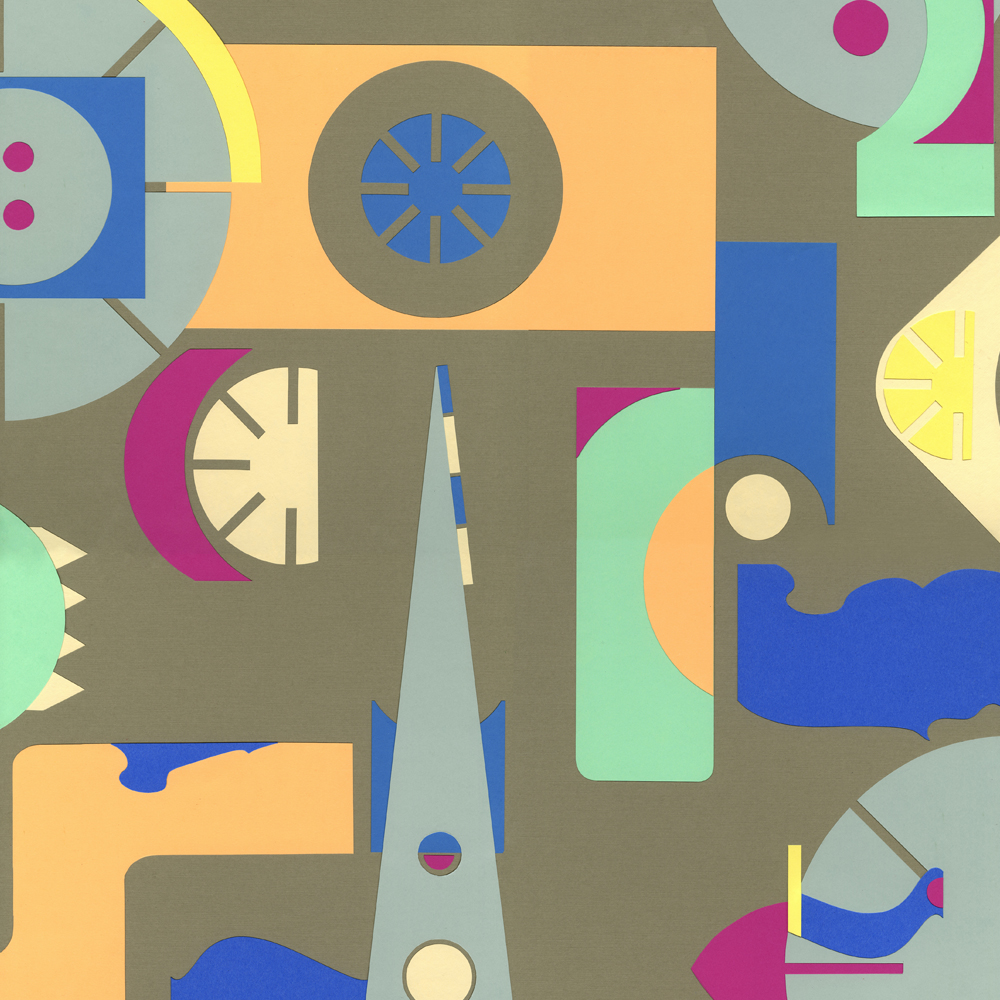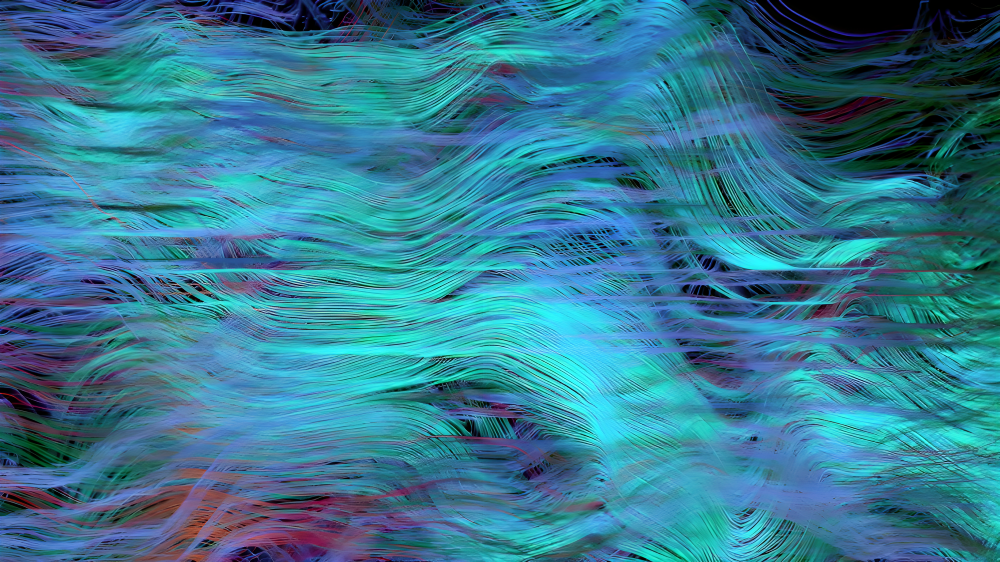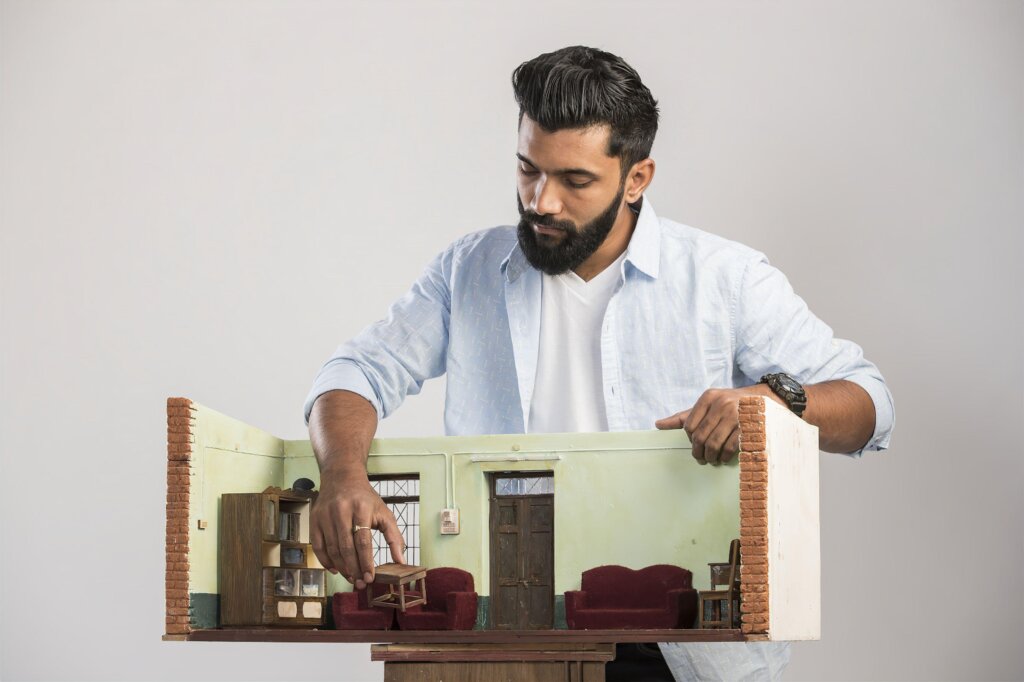
Dubai is often described as “a city of the future”. But what does the future look like, especially for those who will inhabit it when we are gone? The Indian artist Sahil Naik will explore this question with children in art workshops as part of this year’s A.R.M. Holding Children’s Programme, launching at Art Dubai 2024. Reaching at least 15,000 young people in the United Arab Emirates (UAE), this year’s series of creative workshops will see the children create dioramas of their ideas of what a “future city” should be. Here, Naik discusses his own childhood art experiences; his current practice; and why it’s important to encourage creativity in young people today.
What was your own arts education or experience like as a child?
I was born and raised in Goa, India, in a village just outside of Ponda in the lap of the hills and surrounded by some of the oldest mosques, temples and churches in the area. Goa was a Portuguese colony and remained so until 1961, much after the rest of India was liberated from British rule. This collision of cultures, including Goa’s strategic position on the maritime silk route, brought about a range of cultural influences from around the world that found a syncretic home in Goa. A lot of my learning in terms of art and making comes from participating in a range of festivals and carnivals since a very early age. Generations would pass on this knowledge and technique to the next, teaching us while young but also allowing us to experiment and find our voice. So what schools provided in a very limited way was bridged by community learning.
Can you tell us about other artistic workshops or projects you’ve worked on with children and younger people? How have they affected your approach to this children’s programme?
I started out by doing smaller workshops in schools to think about ideas and materials like recycling and scrap, but eventually keeping the ethos of co-learning, making together and hosting dialogues, I started to develop the form we will see at the A.R.M. Holding Children’s Programme. Goa’s distinct architectural tradition and lush ecology became two recurrent themes and connected with my work also in some sense. Children are acute observers and fearless visual artists in their own right and I wanted to develop a flexible space for them to test their ideas. For example, one of the things we talk about a lot is the construction boom in Goa, where a lot of heritage homes not protected by law are being demolished to make way for high end real estate projects. This change is palpable in Goa, which contrary to popular belief is largely made up of villages. Children caught onto this and we developed something called “Memories of Homes” where we would study these houses and bring copious amounts of drawings to our studio and make models of these homes as a form of preserving them. In another workshop, called “Sea, Seed and Stone”, we foraged and gathered natural material, detritus and other kinds of natural forms to produce small dioramas. These workshops are not necessarily about making things as they are, it is also about making things as you would like to see them.
“What are our children thinking? What is the kind of world that they want to live in? To me, future cities must be spaces of care that are respectful of the built and natural environments and consistently strive to strike a balance.”
What made you decide on questions around “future cities” as your children’s programme theme?
Dubai, and the UAE at large, has a large Goan diaspora that started settling there in the 1960s and have, over the decades, been witnesses to the ever-changing, vertical cityscape. Several of these people have built their own version of “Dubai homes”, especially in Goa and Kerala, but unlike Dubai these are painted with bright colours to stand out and display a foreignness. When I started thinking about the workshop, I was thinking about two things – what is architecture in the UAE from the perspective of heritage and early, largely Modernist architecture, and what is the architecture of the future? The idea of “future cities” is a nod to both the past and the future – whilst paying attention to aesthetics and homeliness. I wanted to think about homes and styles and colours, but also furniture and décor and communal spaces that truly make a building a home. I have been thinking and researching a fair bit about nation building in my own work, especially the advent and growth of Modernist architecture in the Middle East, North Africa and South Asia (MENASA) region, which was both cheap and functional and was simple enough to stand in harmony with indigenous architecture. This essentially was a good starting point. I am also deeply fascinated by museums and the form of the diorama and wanted to use it as a medium with children to essentially enable them to build a world of their own.
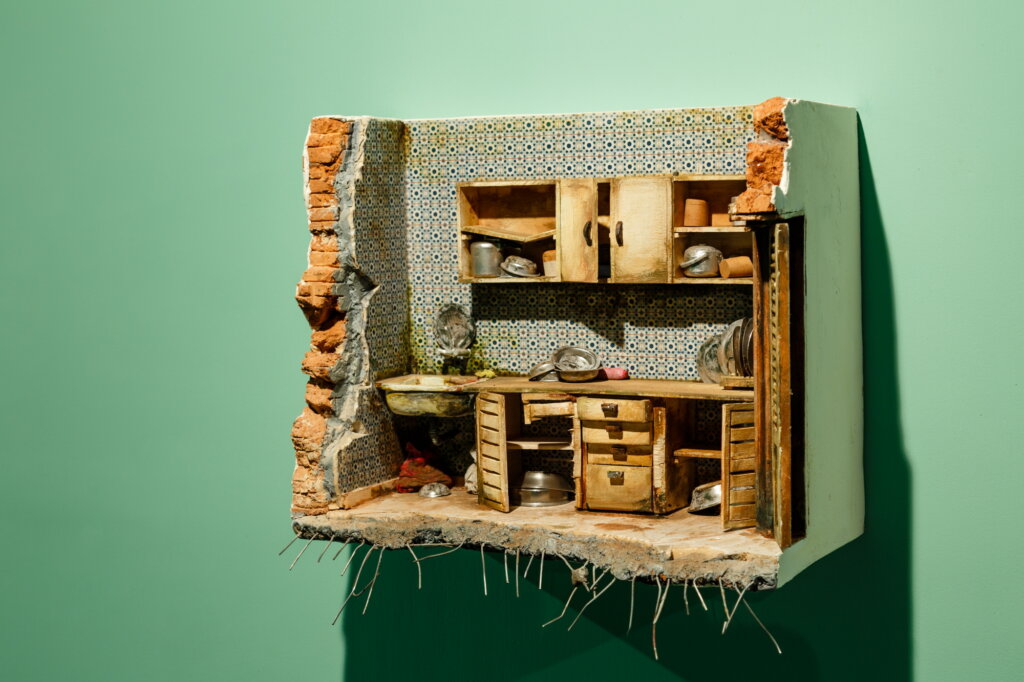
Ground Zero: Site As Witness/Architecture as Evidence 2017/18. Courtesy of the artist and Experimenter
The central question in the programme is: “How do younger generations imagine future cities, and what they will comprise?” How would you answer this question?
That is what this workshop is trying to find out: What are our children thinking? What is the kind of world that they want to live in? To me, future cities must be spaces of care that are respectful of the built and natural environments and consistently strive to strike a balance. To replenish what we take and to actively engage in reparative work. Future cities will continue to have forests alongside cities and not cities in forests.
Can you describe the kinds of things you will be doing in the workshops with the children?
We will be making dioramas and props and painting them like little sets and talking a whole lot about how they imagine future cities. I am sure there will be some flying cars, but there is also usually a lot of care for nature. Although they may not know the word ‘sustainable’, children are often the greatest ambassadors of sustainable living.
“Although they may not know the word ‘sustainable’, children are often the greatest ambassadors of sustainable living”
Can you describe the workshops space that you have designed for Art Dubai 2024?
Designed like a box to reflect the theme, the space has three stations that can host five students at a time. We have also thought of a table serving a kind of a “city buffet” from where children can pick elements for their respective dioramas. I am always interested to see how children think and eliminate to arrive at what they really want and there is always a great logic or a story behind it. The setup is also such that we all work in groups and talk to each other.
Your practice is inspired by the myriad architectural styles in your home city of Goa — how does the relatively new architecture and rapid construction programmes of Dubai make you feel, artistically speaking?
Goa and Dubai are two completely different contexts with two completely different needs for urbanisation. Goa is a tiny tropical state with a very fragile ecology, for example. While Goa is turning into a haven for holiday homes, Dubai is a megapolis, economic and cultural centre that has grown over decades. Scope and scale are very different. Cities are meant to evolve for better or for worse, but whether we can evolve with care and respect for our existing ecosystem and heritage is the big question. I am looking to find out more about Dubai through the eyes and imagination of our children.
Do you have any previous experience of Dubai? What are you hoping to gain from this commission?
This will be my very first time in Dubai, so I am grateful for the opportunity. I am also very excited by the idea of the A.R.M. Holding Children’s Programme not just being limited to the fair but extending to schools over the year. These workshops are meticulously crafted from experience and yet each time we conduct them, children bring something new to the table. So it has been a very enriching exercise to constantly evolve the workshop as we move. I think what makes me most happy about this commission is the accessibility and reach it provides.
What other projects do you have coming up for 2024?
I just closed a solo presentation with Experimenter gallery in Kolkata and am looking forward to being back in the studio. Besides the A.R.M. Holding Children’s Programme, I will also be showing a new set of works with Experimenter at Art Dubai 2024, which I am excited about.
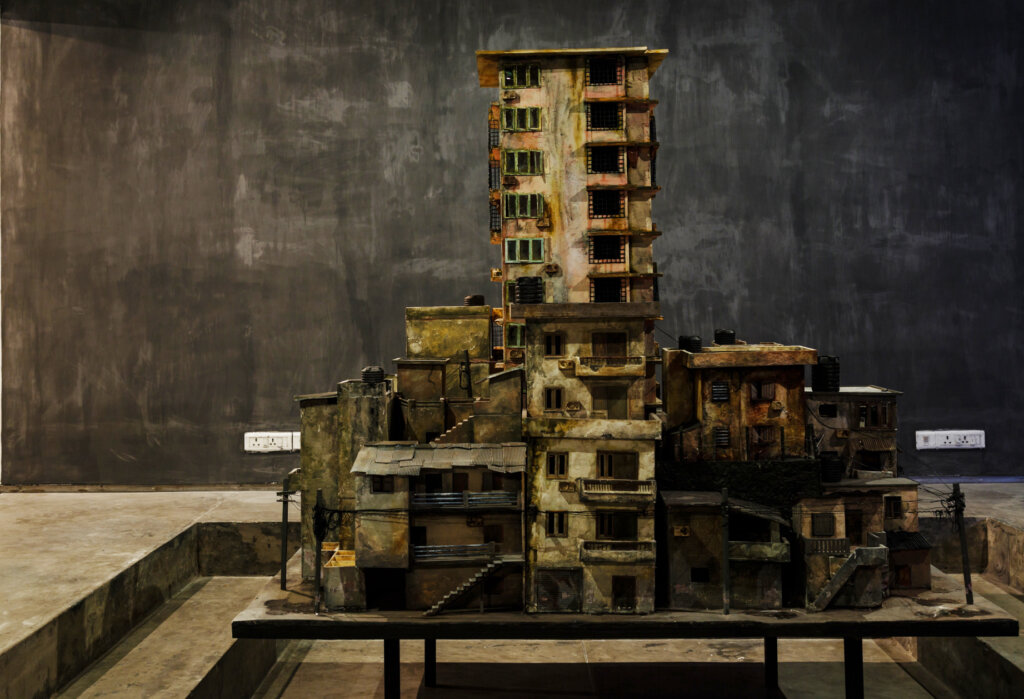
Ground Zero: Site As Witness/Architecture as Evidence 2017/18. Courtesy of the artist and Experimenter
Find out more about the A.R.M. Holding Children’s Programme here.





